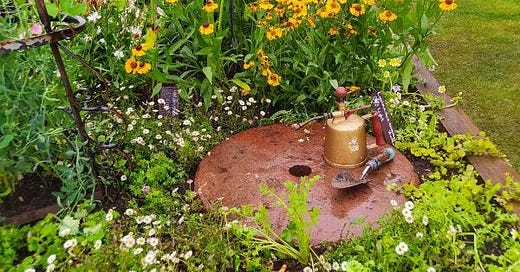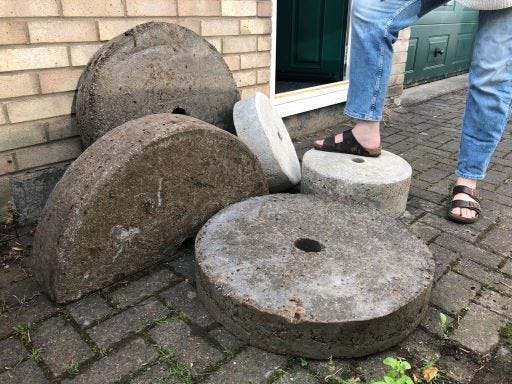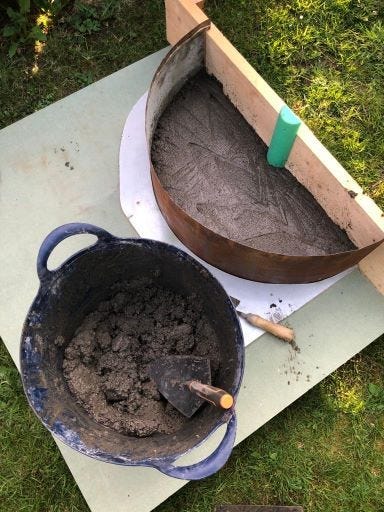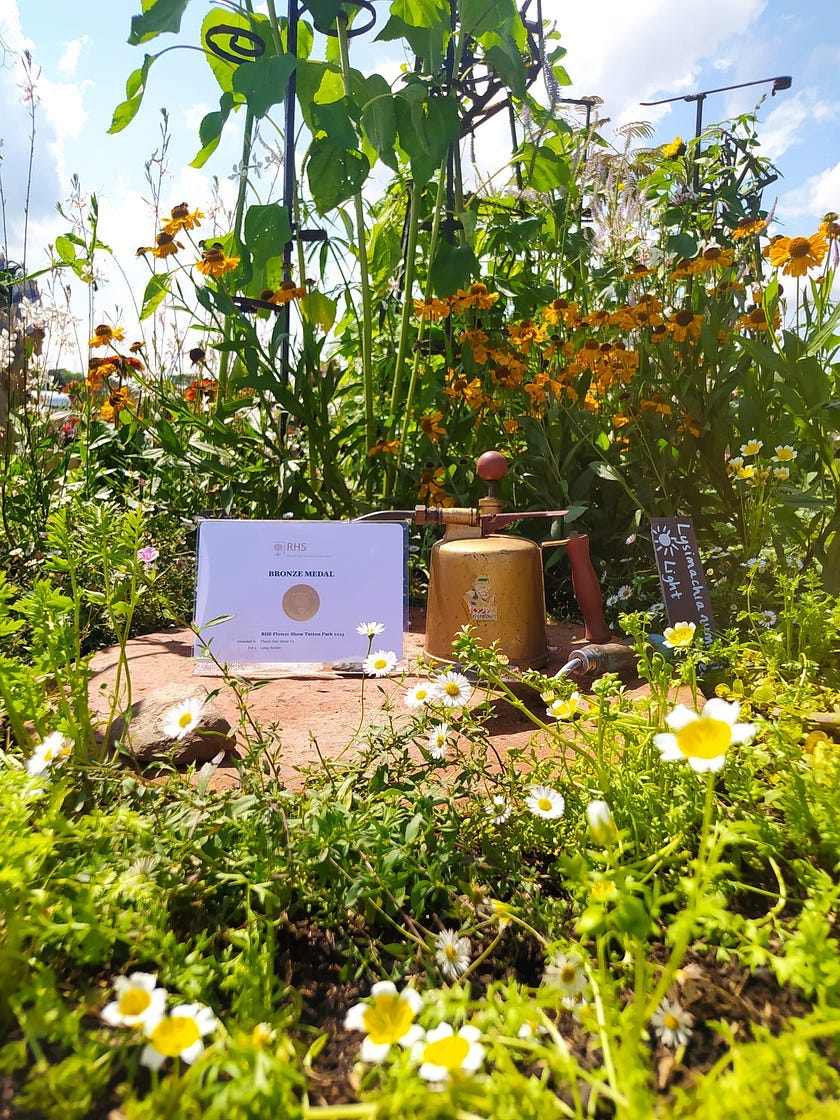How to Hypertufa: Behind the scenes at the RHS Flower Show
How we made replica millstones for RHS Flower Show Tatton Park
When I drew my initial garden design for RHS Flower Show Tatton Park, I included five millstones of different sizes. Millstones are beautiful garden features that are very common in Yorkshire. In addition, they were a material that Charles Darwin used in some of his experiments at Down House. I wanted to use millstones to give structure to the garden, add a sense of history and a nod to botany.
However, they are expensive to buy, extremely heavy and can cost thousands of pounds to transport — not very cost-effective and certainly not good for the environment! Therefore, we decided to make hypertufa millstones. See below for step-by-step instructions of how we did it.
What is hypertufa?
Hypertufa is a strong, lightweight material that you can mould into different shapes. It can be used as an alternative to concrete or stone, and it can be made at home. The traditional recipe uses peat, but this can be substituted for coconut coir to make it more eco-friendly. Hypertufa is often used in alpine gardens to make rocks and planting containers.
I used hypertufa to make millstones because it has a stone-like finish, can be formed into any shape and is very light. For a normal millstone, you need a forklift to pick it up. I could pick up my millstones by myself! That makes it much more convenient for gardening projects, especially show gardens.
Peat-free hypertufa recipe
MATERIALS
1.5 parts perlite
1.5 parts coconut coir (fluffy, not soggy)
1 part cement (normal Portland cement, not quick set)
1. First prepare your mould.
For my millstones, the mould was made from spare materials lying around: a waterproof shower board, plywood, and 1mm steel.
The mould was sealed with builders' silicone for 1 day before adding the mixture. You could use any sealant but this is important, as it stops the liquid leaking out.
2. Prepare the hypertufa.
First, mix your dry ingredients together. Then gradually add water, 1 litre at a time, until you get a good consistency.
3. Fill the mould.
Carefully fill the mould, avoiding air bubbles.
In order to make my millstones lighter, we used some old loft insulation to fill the middle. This means they are basically hollow. You have to add a layer of hypertufa to the mould, then add the “filling”, before surrounding it with the remaining hypertufa. For my millstones, there is about 4cm of hypertufa surrounding the loft insulation.
4. Leave to set.
You now need to leave the hypertufa in the mould for about 2 days.
After 2 days, you can remove the mold but the hypertufa is not ready.
You should keep it covered, and damp, for at least 7–10 days so it dries slowly without cracking.
After 7 days, you can make adjustments to the shape using an angle grinder or other tools.
5. Add colour
The natural colour is a pale grey. To make my millstones more red, we used sulfate of iron. It is easy to get from garden centres where it is sold as plant food for hydrangeas. This helps colour the hypertufa. You can also use other materials like coffee grounds to change the colour. Your hypertufa millstone is ready!
Result of the experiment
I was inspired to use millstones because they are a found material which Darwin used for experiments in his living laboratory. However, they are so heavy and totally impractical to get on site. This was a really cost-effective solution and I loved how they came out. After the show, we could easily move the millstones to their new permanent home. They make great structures to have plants climb over like creeping jenny or Geraniums. The red colour stands out against green plants. Stone is an expensive material that is hard to come by, so if you don’t happen to have any, this is a good alternative.
Sustainability
Hypertufa isn’t a totally “clean” material, but its lightweight nature means it’s easier to transport (transporting millstones would have cost thousands and used multiple trips). It also uses less raw materials than concrete. Concrete uses lots of rock which is not only heavy but must be mined and transported to the site. In comparison, coconut coir and perlite are both very light materials that can be sourced more sustainably.
My millstones were made to order by Thomas Fenwick in York. Please get in touch if you would like to have some made for your garden. You can see more about the garden on my Instagram page.







